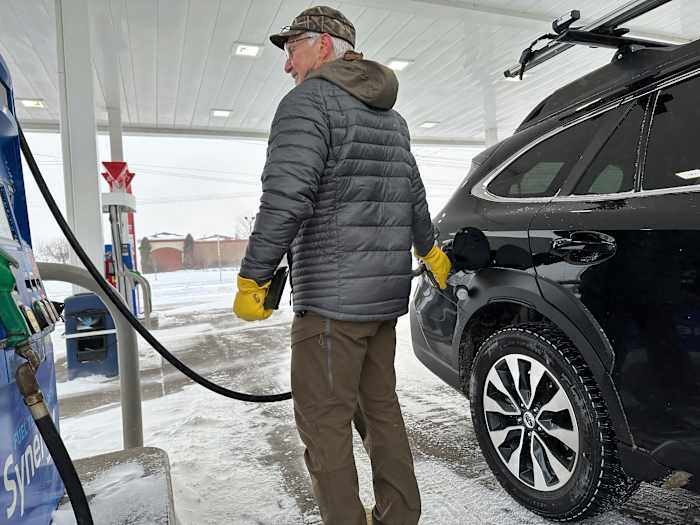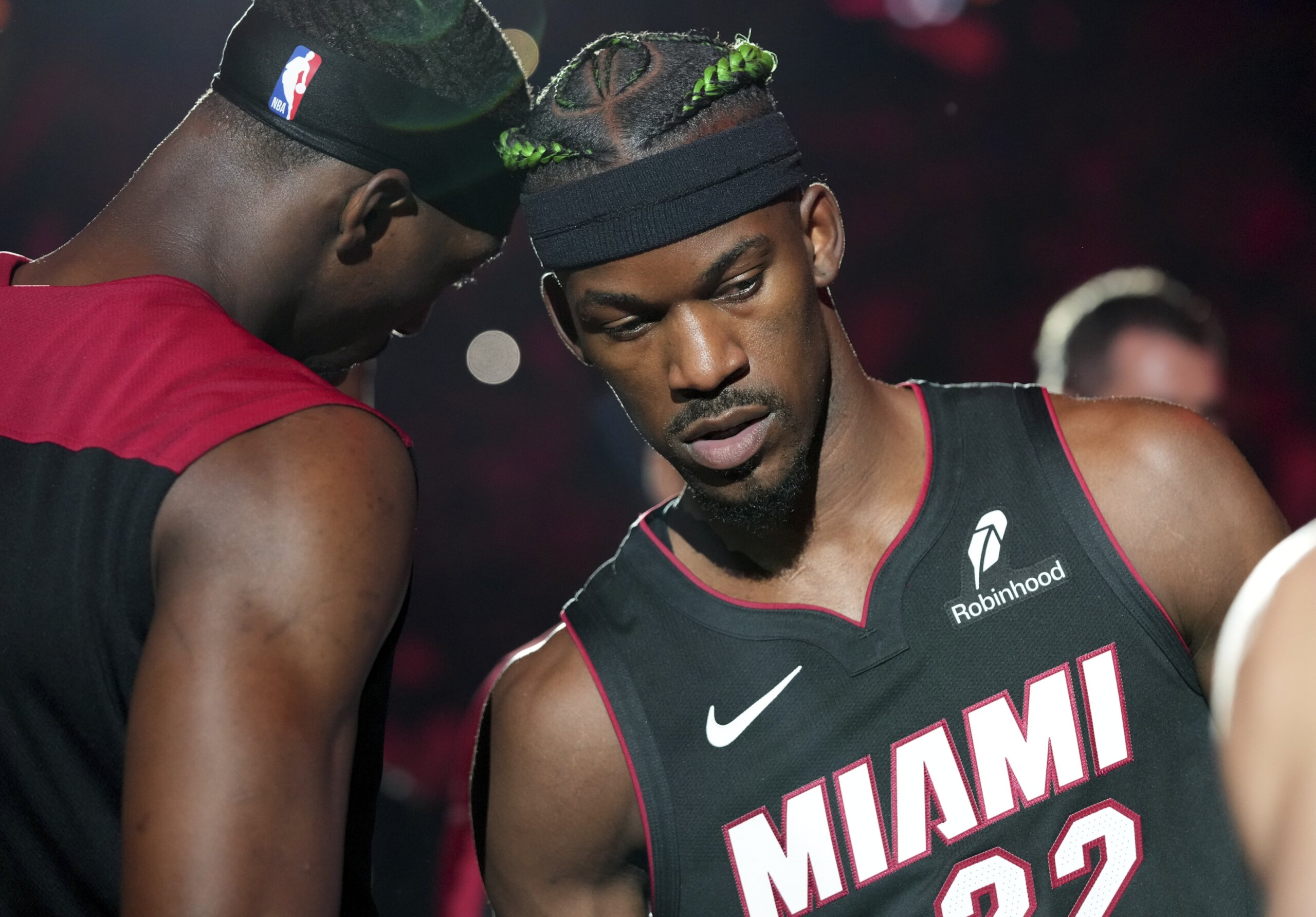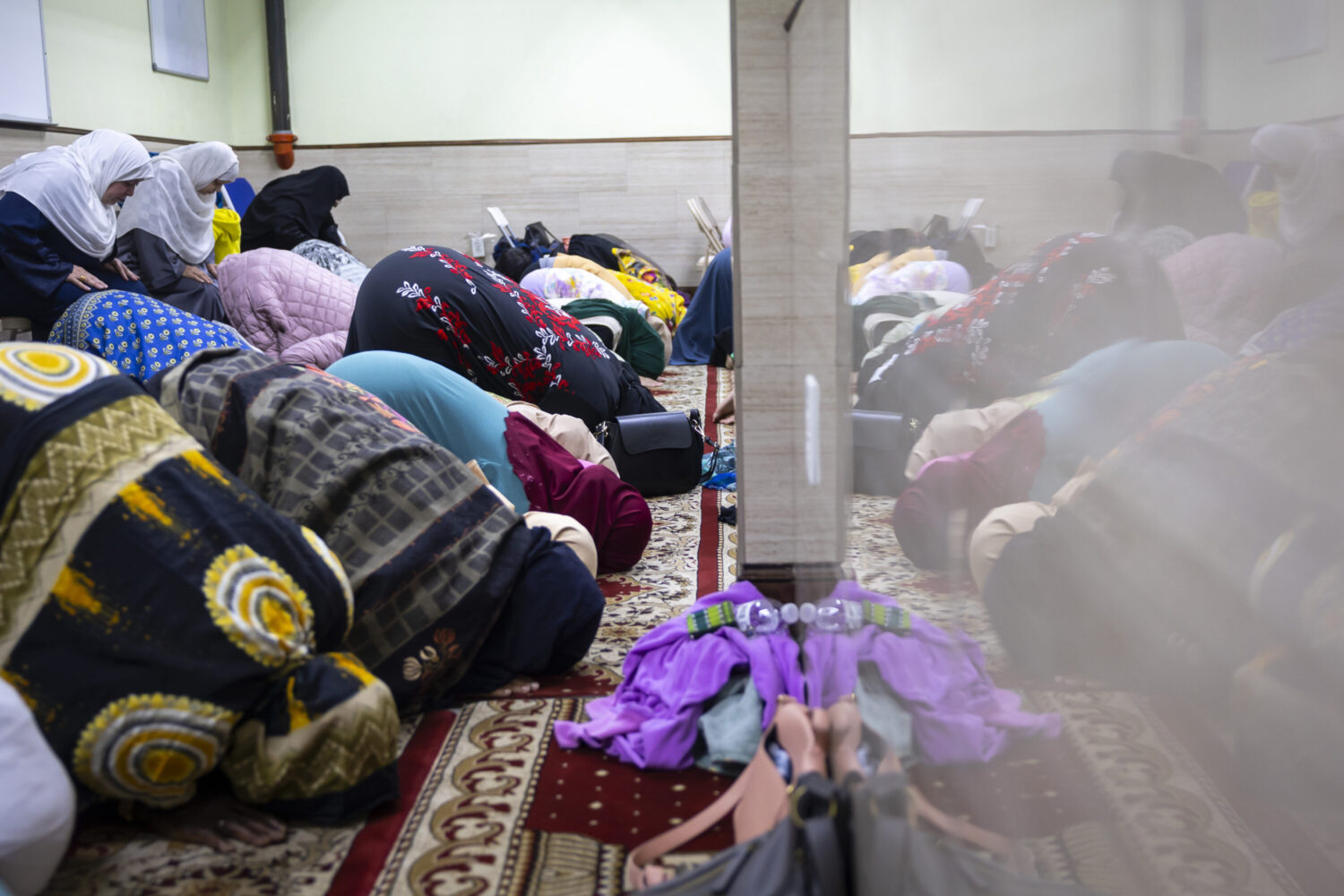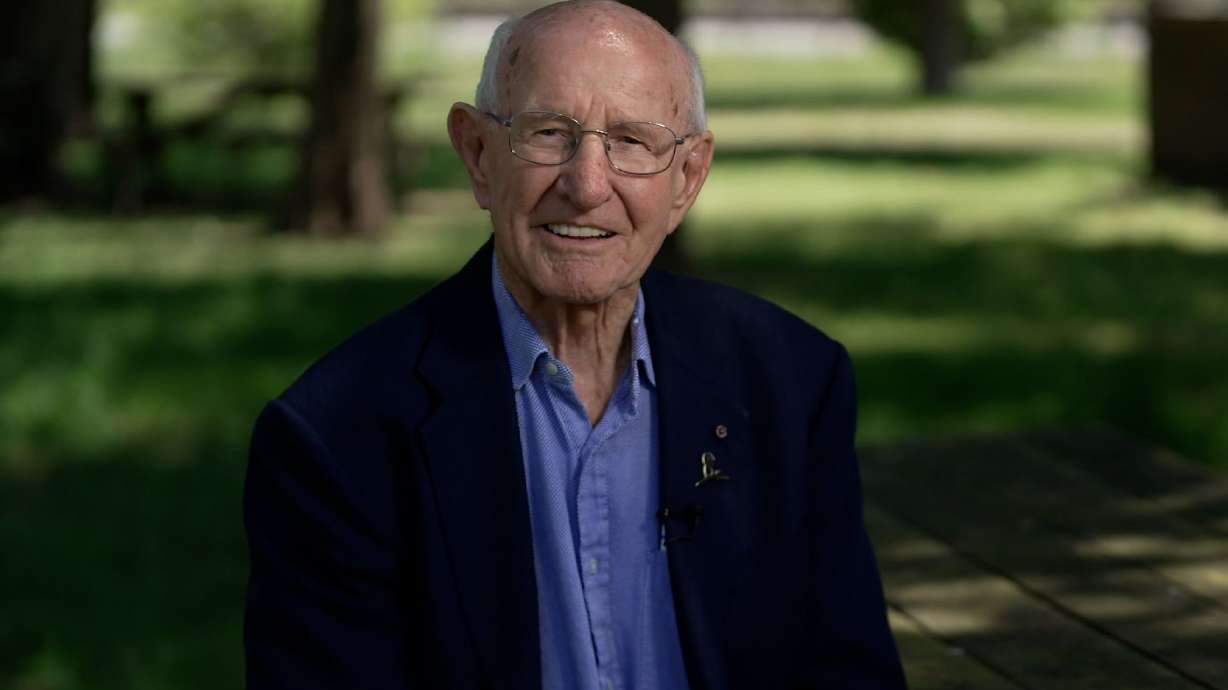
Galp Energia investigating CEO Filipe Silva over alleged relationship with manager: report Seeking Alpha
source

WEATHER ALERT
Jyesha Johnson
Published:
Jyesha Johnson
As many parts of the state prepare to deal with wintry weather, the Texas Department of Public Safety (DPS) reminds us that extreme cold, freezing rain, ice, and snow can pose major hazards to both drivers and pedestrians.
Colonel Freeman Martin from DPS puts it simply: “Plan ahead, check road conditions, and adjust your driving for the type of roads you’re traveling on. These are all simple things that can make a big impact in making this winter season safer for everyone on the road.”
Recommended Videos
SUGGESTED: CenterPoint Energy monitoring potential severe weather in the Greater Houston
High-Risk Areas: Northeast Houston and surrounding areas
KPRC 2 meteorologists say the highest risk zone starts in northeast Houston, including cities like Cleveland and Livingston. If there are warnings, our KPRC Storm Tracker 2 app will alert you.
Here are some essential tips to help you stay safe and warm, whether you’re hitting the roads or cozying up at home:
MORE ON WEATHER: Everything to know about next week’s arctic air, snow possibility in Houston
1. Prepping Your Ride for the Freeze
Before hitting the road, let’s make sure your car is ready for whatever winter throws at it. A quick checklist could save you a whole lot of hassle later:
And don’t forget an emergency kit! You never know when you might get stuck, so pack some warm clothes, food, water, and a portable phone charger. Better safe than sorry!
2. Road Trip or Stay Home?
We get it—sometimes you just have to get out, but winter weather and driving don’t always mix. So here’s what you need to know:
3. Stay Warm at Home
Winter isn’t just about the roads—it’s about keeping your home safe and cozy too. Here are some easy tips to keep your house in tip-top shape:
4. Check In On the Ones You Love
Winter can be especially tough on the elderly or those with health conditions. Take a minute to check in on friends and family to make sure they’re doing okay.
Copyright 2025 by KPRC Click2Houston – All rights reserved.
Jyesha Johnson, a Mississippi Delta girl who swapped small-town newsrooms for big-city screens at Houston’s KPRC 2, is all about telling stories—whether it’s on the web, social media, or over a good meal. When she’s not crafting content, you’ll find her outside soaking up nature or hunting down the best food spots.
Recommended Videos
TV Listings
Email Newsletters
RSS Feeds
Contests and Rules
Contact Us
Meet the Team
Careers at KPRC
Closed Captioning / Audio Description
Public File
Current EEO Report
Terms of Use
Privacy Policy
Do Not Sell My Info
FCC Applications
If you need help with the Public File, call (713) 778-4745.
At KPRC, we are committed to informing and delighting our audience. In our commitment to covering our communities with innovation and excellence, we incorporate Artificial Intelligence (AI) technologies to enhance our news gathering, reporting, and presentation processes. Read our article to see how we are using Artificial Intelligence.
Copyright © 2025 Click2Houston.com is managed by Graham Digital and published by Graham Media Group, a division of Graham Holdings.

Police detain at least six anti-government protesters in Tel Aviv clashes The Times of Israel
source

WATCH LIVE: Jimmy Carter’s body to arrive in Atlanta as state funeral proceeds
The Associated Press
January 4, 2025, 3:28 PM
MIAMI (AP) — For the 119th time since Jimmy Butler joined Miami, the Heat were set to play a game Saturday night without him.
This is different from the others.
Butler is gone, banished by the Heat for seven games over what they called conduct detrimental to the team — and he’s probably not going to play for Miami again. His suspension starts when the Heat play the Utah Jazz, and the team says it will agree to his wishes and try to facilitate a trade.
“It’s disappointing when you see the organization and a player going head to head like that,” Heat captain Bam Adebayo said Saturday after the team’s shootaround practice. “But the rest of us got to figure out how to win games.”
Butler has not commented publicly on the suspension. The National Basketball Players Association spoke out on Butler’s behalf hours after the Heat announced the suspension on Friday, saying it believes the team’s actions are “excessive and inappropriate.” The suspension could cost Butler about $2.4 million of his $48.8 million salary this season.
“It’s none of our business,” Adebayo said. “It’s for Jimmy and for the management to handle.”
How it gets handled from here, and on what timeframe, is anyone’s guess.
Trading Butler will be a challenge in this new NBA world, with the rules of the collective bargaining agreement limiting the ways teams can acquire players. It’s possible, but it’s far from certain. And the Heat simply letting Butler leave as a free agent this summer also remains a possibility — a move that would open up some other avenues for Miami to acquire new players.
“It sucks to see that he won’t be around,” Heat guard Terry Rozier said.
Butler averaged 21.7 points, 6.2 rebounds and 5.7 assists in 380 games with the Heat, including playoffs. Entering Saturday, since Butler joined the Heat, they won 59.7% of their games when he played (227-153); they’ve won 49.2% of their games when he hasn’t (58-60).
He became eligible last summer for a two-year, $113 million extension. The deal was never offered by the Heat, in part because Butler has missed about one-quarter of the team’s games during his Miami tenure.
It was only natural that such a big sum of money not being offered was going to lead to problems. And the tension boiled over this week. Butler didn’t play in the fourth quarters of Miami games on Wednesday and Thursday; he spent some offensive possessions simply standing in the corner, almost as if he had no role.
“I feel like he came to work, he tried to perform, and it just didn’t go his way,” Adebayo said. “I feel like he didn’t want to be in the corner. But like I said, we develop a system where we play around everybody, and we just had to figure out how to incorporate him. But after what happened yesterday, we’re focused on who’s with us now.”
After the second of those games earlier in the week, Butler said “probably not” when asked if he thought he could find on-court joy again in Miami.
Saying those two words may have been his last official act as a member of the Heat. A week or so ago, Miami had no interest in trading Butler. Hearing him say that he doesn’t want to be on the team any more evidently changes things.
“It’s hard to not see him around,” Heat forward Nikola Jovic said.
___
AP NBA: https://apnews.com/hub/NBA
Copyright © 2025 The Associated Press. All rights reserved. This material may not be published, broadcast, written or redistributed.
5425 Wisconsin Ave
Chevy Chase, MD 20815
hello@wtop.com
202.895.5000
Copyright © 2025 by WTOP. All rights reserved. This website is not intended for users located within the European Economic Area.

 69 °F
69 °F
The FBI says the man responsible for the attack that killed 14 people was Shamsud-Din Jabbar, a 42-year-old Army veteran from Houston. He was killed in an exchange of gunfire with police following the attack.
At Houston’s Medical Center Islamic Society, men, women and children left their shoes at the entrance as they gathered for midday prayers.
This week’s Friday service was the first since the horrific New Year’s Day attack in New Orleans. Basem Hamid, one of the imams at the mosque, had a powerful message in his sermon.
“As Muslims, we condemn this incident, this horrific act with the most severe and clearest statement,” he said. “This act has no place in Islam and has no place among Muslims and it’s not accepted by any standard. There is no excuse and there is no justification for it.”
In the wake of the truck attack and the revelation that the driver lived in Houston and had pledged allegiance to the terrorist group ISIS, some Muslim residents worry about the impact this will have on their community. Will they be singled out? Should they be concerned about their safety? Many of those attending Friday prayers were quick to point out that the alleged perpetrator did not represent them or their faith.
RELATED: Houston man suspected in deadly New Orleans truck attack called ‘act of terrorism’
About 200,000 Muslims live in the greater Houston area, the largest population of Muslims in Texas. It’s a diverse, growing community that includes immigrants as well as people born in the U.S. Just recently, a new Islamic Center for Spanish-speaking Muslims opened and early last year, George Bush Intercontinental Airport added a dedicated area where Muslims can wash and pray.
At the Medical Center Islamic Society mosque, there are signs of that growth. Construction is underway for a new, larger center. During Friday’s service, female members in colorful hijabs packed the women’s prayer area. The room included young girls and boys. Every now and then, a baby would cry out or babble.
Among those in the room was Umme Kulsum, who is originally from India but has lived in Texas for a number of years. She’s married and raising four children. She follows the news closely and said she had two fears when she heard about the attack in New Orleans.
“The first fear in my mind was I hope it’s not someone from our community — that was the first fear,” she said. “Then it’s like, now what will happen? What next? What will be the Islamophobic reactions we might face in our community?”
As a parent, she worries about her children and the questions they’ll ask her. She said parents have to be prepared to talk to their kids about these issues.
Echoes from 2001
Some congregants of the mosque said there’s an uncomfortable feeling that echoes what they felt more than two decades ago. Mohamed Salama, an IT worker who splits his time between Houston and Dallas, talked about this after Friday prayers.
“I lived through September 11 and I have, to this day, have very vivid memory of both how sad it was and then afterwards, how difficult it was to be a Muslim in the U.S. and how concerned I was about practicing, simply just going to mosque.”
The FBI says the man responsible for the attack in New Orleans that killed 14 people was Shamsud-Din Jabbar, a 42-year-old Army veteran from Houston. He was killed in an exchange of gunfire with police following the attack.
RELATED: Brother of alleged New Orleans attacker mystified about his radicalization
The Islamic Society of Greater Houston said Jabbar was not a formal member at any of its 21 mosques in Houston.
During the service at the Medical Center Islamic Society, Imam Hamid didn’t just denounce the attack. He singled out social media, which he believes is fueling a lot of hate, anger and misinformation. Many individuals, he said, claim to be experts on Islam or leaders of the faith but end up leading others astray.
“This is how people get radicalized – by getting exposed to unreliable sources of Islam,” he said.
Hamid and other imams in Houston say they’ve been talking to each other about how to combat this problem.
Waleed Basyouni, the imam of Clear Lake Islamic Center, says he’s challenged his congregants to think about how best to address their concerns. After the Oct. 7, 2023, Hamas attack in Israel and Israel’s bombardment in Gaza, for example, he asked them several questions.
“We’ve been talking about, how can you channel your anger, your opinion, your political position, whatever you feel in the right way and the most effective way?” he said.
RELATED: FBI conducts second search of Houston home tied to alleged New Orleans attacker
After the attack in New Orleans, several Houston Muslim organizations issued statements. The Islamic Society of Greater Houston said it was “horrified by the senseless crime targeting civilians” and extended its condolences to the families of those killed.
“ISGH has a longstanding absolute zero-tolerance policy against extremism and suspicious activities,” said the statement, which asked anyone with relevant information to contact law enforcement. “The attack on civilians, regardless of their nationality, ethnicity or religion, is an atrocity that no ideology or cause can justify.”
Shariq Ghani, the executive director of The Minaret Foundation, a multi-faith group in Houston, said it’s important to build and maintain bridges with other communities.
His organization hosts a number of events throughout the year. A recent one was called “Competing in Goodness” and included 30 faith organizations from the Greater Houston area. The groups competed against each other to raise food for local food pantries.
“The clergy I’ve spoken to aren’t very concerned about retaliation or secondary attacks,” he said. “What they’re most concerned about is how this impacts us, our neighborliness, our social cohesion. Will it lead to Islamophobia or othering communities here in our city?”
More Articles by This Author
Houston Public Media is supported with your gifts to the Houston Public Media Foundation and is licensed to the University of Houston
© 2025 Houston Public Media

Estimated read time: 8-9 minutes
CAPE MAY, N.J. — First come the horseshoe crabs. Hoisting their round, tank-like shells, they trundle out of the Delaware Bay under the first full moon in May to mate and lay their eggs.
The birds soon follow. Hundreds of thousands of squawking, migrating shorebirds descend on these beaches to gorge themselves on the protein- and fat-rich eggs. Over the course of a week, some of the birds will double their weight as they prepare to resume their journeys between South America and their summer breeding grounds in the Arctic. Up to 25 different species of birds stop here each spring.
It’s an ecological wonder not seen anywhere else in the world, and a bonanza for scientists who are looking to stop the next pandemic.
This year, their work has taken on new urgency as a dangerous flu virus, H5N1, tears through dairy cattle and poultry flocks in the United States. The world is watching to see if the threat will escalate.
The work at this beach could help make that clear.
"It’s a treasure trove around here," said Dr. Pamela McKenzie, beckoning to her research partner, Patrick Seiler.
McKenzie and Seiler are part of a National Institutes of Health-funded team at St. Jude Children’s Research Hospital that’s been coming to the beaches near here for almost 40 years to collect bird poop.
The project is the brainchild of Dr. Robert Webster, a New Zealand virologist who was the first to understand that flu viruses come from the guts of birds.
"We were most amazed. Instead of in the respiratory tract, where we thought it was, it was replicating in the intestinal tract and they were pooping it out in the water and spreading it," said Webster, who is now 92 and retired but still joins the collection trip when he can.
The poop, or guano, of infected birds is teeming with viruses. Out of all known influenza subtypes, all but two have been found in birds. The other two subtypes have only been found in bats.
On his first trip to the Delaware Bay in 1985, Webster and his team found that 20 percent of the bird poop samples they brought back with them contained influenza viruses, and they realized the area was an ideal observatory to track flu viruses as they traveled in birds along the Atlantic flyway, which runs between South America and the Arctic Circle in northern Canada.
Finding a new flu virus here may give the world an early warning to incoming contagion.
The project has become one of the longest running influenza sampling projects of the same bird populations anywhere in the world, said Dr. Richard Webby, who has taken over the project Webster started. Webby directs the World Health Organization’s Collaborating Center for Studies on the Ecology of Influenza in Animals at St. Jude.
Predicting pandemics, Webby explains, is a little like trying to predict tornadoes.
"To predict the bad things, whether it’s a tornado, whether a pandemic, you’ve got to understand normal now," Webby said. "From there we can detect when things are different, when it changes hosts and what drives those transitions."
The U.S. is in the midst of one of those transitions now. A few months before the St. Jude team arrived in Cape May this year, H5N1 had turned up for the first time in dairy cattle in Texas.
The finding that H5N1 could infect cows put flu experts, including Webby, on alert. Type A influenza viruses like H5N1 had never before spread in cows.
Scientists have followed H5N1 for more than two decades. Some flu viruses cause no symptoms or only mild symptoms when they infect birds. These viruses are called low pathogenic avian influenzas, or LPAI.
H5N1, which makes birds very ill, is called an HPAI, for highly pathogenic avian influenza. It devastates flocks of farmed birds like chickens and turkeys. In the US, infected flocks are euthanized, or culled, as soon as the virus is identified, both to prevent the spread of the infection and to mitigate the birds’ suffering.
It’s not the first time U.S. farmers have had to contend with a highly pathogenic bird flu. In 2014, birds migrating from Europe brought H5N8 viruses to North America. Aggressive culling, resulting in the deaths of more than 50 million birds, stopped that outbreak and the US remained free of highly pathogenic bird flu viruses for years.
The same strategy hasn’t stopped H5N1, however.
H5N1 arrived in the U.S. in late 2021, and despite aggressive depopulation of infected poultry flocks, has continued to spread. In the last two years, H5N1 viruses have also developed the ability to infect a growing variety of mammals such as cats, foxes, otters, and sea lions, bringing them a step closer to spreading easily in humans.
H5N1 viruses can infect humans, but these infections don’t travel from person to person so far because the cells in our nose, throat and lungs have slightly different receptors than the cells that line the lungs of birds.
It wouldn’t take much for that to change, however. A recent study in the journal Science found that a single key change to virus’ DNA would allow it to dock onto cells in the human lungs.
The team at Cape May had never before found H5N1 in the birds they sampled there. But with the virus spreading in cows in several states, they wondered where else it might be. Had it reached these birds, too?
McKenzie and Seiler stepped gingerly onto the boggy beach this past spring in boots, gloves and face masks. Their pockets were stuffed with dozens of swabs they used to scoop fresh white guano out of the sand and deposit it into plastic vials they wedged expertly between their fingers. The vials went back into trays that got stacked neatly into a beige cooler Seiler hoisted onto his shoulder as he moved down the beach. Over the course of a week, the team would collect 800 to 1,000 samples.
Any flu viruses in the samples would be sequenced — the exact letters of the viruses’ genetic code would be read — and uploaded to an international database, a kind of reference library that helps scientists track influenza strains as they circle the globe.
The largest white droppings belonged to the seagulls — black-headed laughing gulls and white-headed herring gulls — McKenzie explained. The team planned to do a separate study focused on seagulls this year.
"There are some viruses that we’ve only found in gulls," Seiler explained.
Some white splats, those that had visible lines of lumps of eggs still in them, belong to small birds called semipalmated sandpipers.
A few yards away, a fling of brown birds called dunlins was probing the sand for crab eggs with their long black beaks and nervously eyeing Seiler and McKenzie as the pair made their way down the beach.
Some of the samples they were collecting would be express shipped on ice back to Memphis, Tennessee, where St. Jude is located, but others would travel across town to an RV park, where Dr. Lisa Kercher was waiting for them.
Kercher, the director of laboratory operations at St. Jude, converted a typical RV into a mobile lab that was parked among other campers. This year, she was testing it out in the field to see if it could speed up the team’s work.
"We take samples in the field and we send them back to the lab and then we have an army of technicians that work diligently on these thousands of samples," Kercher said. It can take months before the team knows the exact subtypes of the viruses they’ve found.
"If I’m here in May, for example, I will not know the subtypes of these viruses until September or October," she said.
Kercher’s goal is to quickly screen the samples in the field to see if they contain influenza viruses or not. Each year, about 10% of the samples they bring back have flu viruses. If she could send only the positive samples back to the lab, they could be processed more quickly.
After fully sequencing the samples this year, they didn’t find H5N1 in either the Cape May samples or the duck samples from Canada.
"We don’t know exactly why," Kercher said in an interview last week. "We’ve always been a little curious about that."
The surveillance data that the team collected recently contributed to a new preprint study, which was posted last week ahead of peer review.
The study was led by Dr. Louise Moncla, a scientist who studies the evolution of viruses at the University of Pennsylvania.
By analyzing surveillance data like the kind collected by Webby and his team, the Penn team found that the H5N1 outbreak that began in 2021 in North America was driven by eight separate introductions of the virus by wild, migrating waterfowl and shorebirds along the Atlantic and Pacific flyways.
Moncla and her team believe that the current outbreak hasn’t been stopped by aggressive culling, as it was in 2014, because wild birds continue to introduce it into populations of farmed and backyard flocks.
They conclude that wild birds are an emerging reservoir for the virus in North America, and that surveillance of migrating birds is critical to stopping future outbreaks.
Webby and his team say they plan to continue their lookout. Come May, when the first full moon rises over the Delaware Bay, they’ll be back to do it all over again.
Kercher said what they found this year in the Delaware Bay was about what they’ve seen for the last 40 years: Shore birds are moving viruses around long distances.
"They stop in Delaware Bay to refuel, and then the viruses get moved around while they’re stopped over and then they carry it off again," Kercher said.
There’s no way to know what lies ahead or whether the H5N1 virus will finally shape shift enough to become a danger to people, which it has already shown signs of. If it does, she said, they’ll be watching.

Swedish Military to Serve as Anchor Customer for Esrange Space Center? European Spaceflight
source

THE NATIONAL Lottery results are in and it's time to find out who has won a life-changing amount of money tonight (January 4, 2025).
Could tonight's jackpot of £7.4million see you handing in your notice, jetting off to the Bahamas or driving a new Porsche off a garage forecourt?
You can find out by checking your ticket against tonight's numbers below. Good luck!
Tonight's National Lottery Lotto winning numbers are: 16, 19, 22, 24, 27, 35 and the Bonus Ball is 28.
Tonight’s National Lottery Thunderball winning numbers are: 05, 11, 14, 17, 35 and the Thunderball is 08.
The first National Lottery draw was held on November 19 1994 when seven winners shared a jackpot of £5,874,778.
The largest amount ever to be won by a single ticket holder was £42million, won in 1996.
Gareth Bull, a 49-year-old builder, won £41million in November, 2020 and ended up knocking down his bungalow to make way for a luxury manor house with a pool.
Sue Davies, 64, bought a lottery ticket to celebrate ending five months of shielding during the pandemic — and won £500,000.
Sandra Devine, 36, accidentally won £300k – she intended to buy her usual £100 National Lottery Scratchcard, but came home with a much bigger prize.
The biggest jackpot ever to be up for grabs was £66million in January last year, which was won by two lucky ticket holders.
Another winner, Karl managed to bag £11million aged just 23 in 1996.
The odds of winning the lottery are estimated to be about one in 14million – BUT you've got to be in it to win it.
©News Group Newspapers Limited in England No. 679215 Registered office: 1 London Bridge Street, London, SE1 9GF. “The Sun”, “Sun”, “Sun Online” are registered trademarks or trade names of News Group Newspapers Limited. This service is provided on News Group Newspapers’ Limited’s Standard Terms and Conditions in accordance with our Privacy & Cookie Policy. To inquire about a licence to reproduce material, visit our Syndication site. View our online Press Pack. For other inquiries, Contact Us. To see all content on The Sun, please use the Site Map. The Sun website is regulated by the Independent Press Standards Organisation (IPSO)
Our journalists strive for accuracy but on occasion we make mistakes. For further details of our complaints policy and to make a complaint please click this link: thesun.co.uk/editorial-complaints/